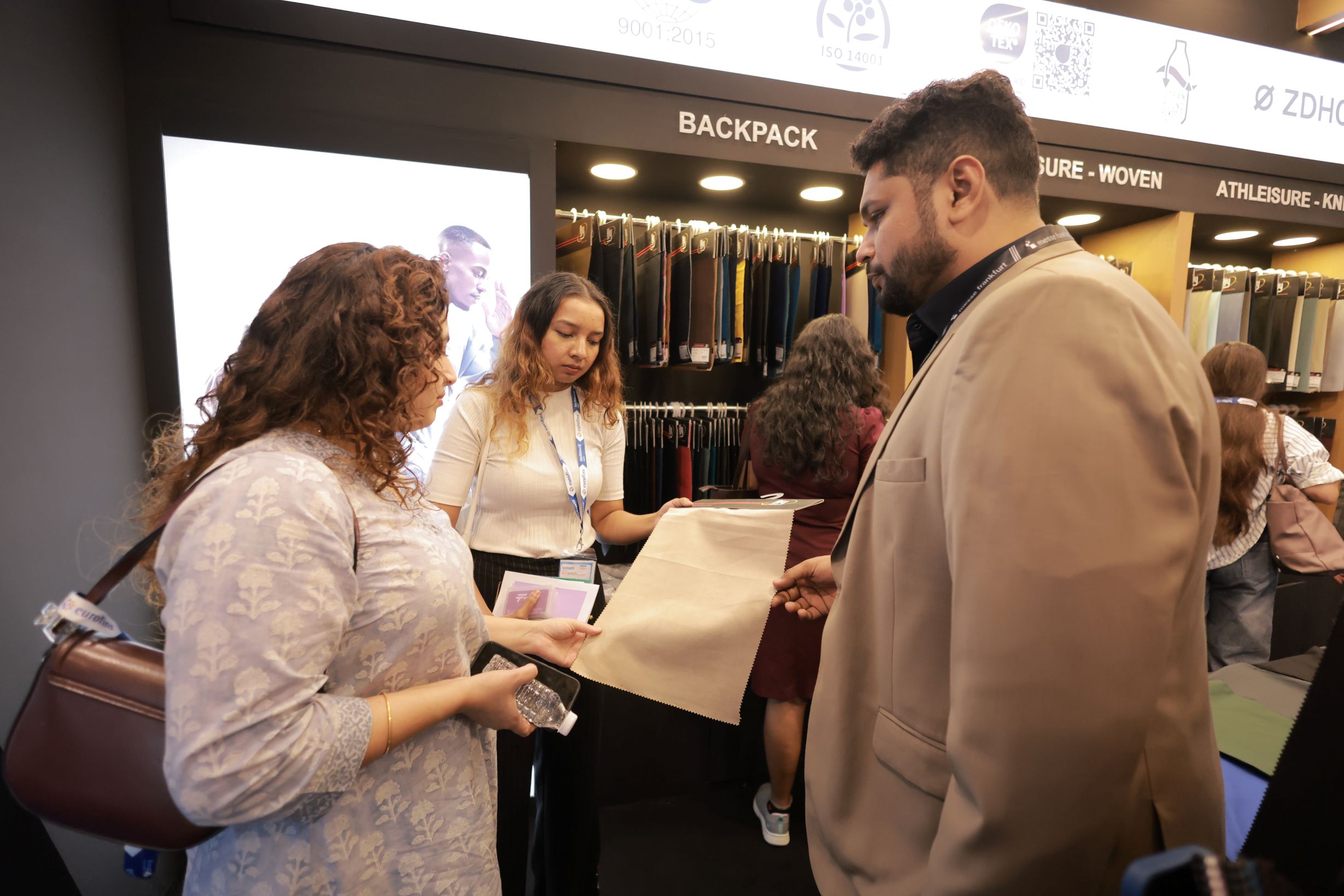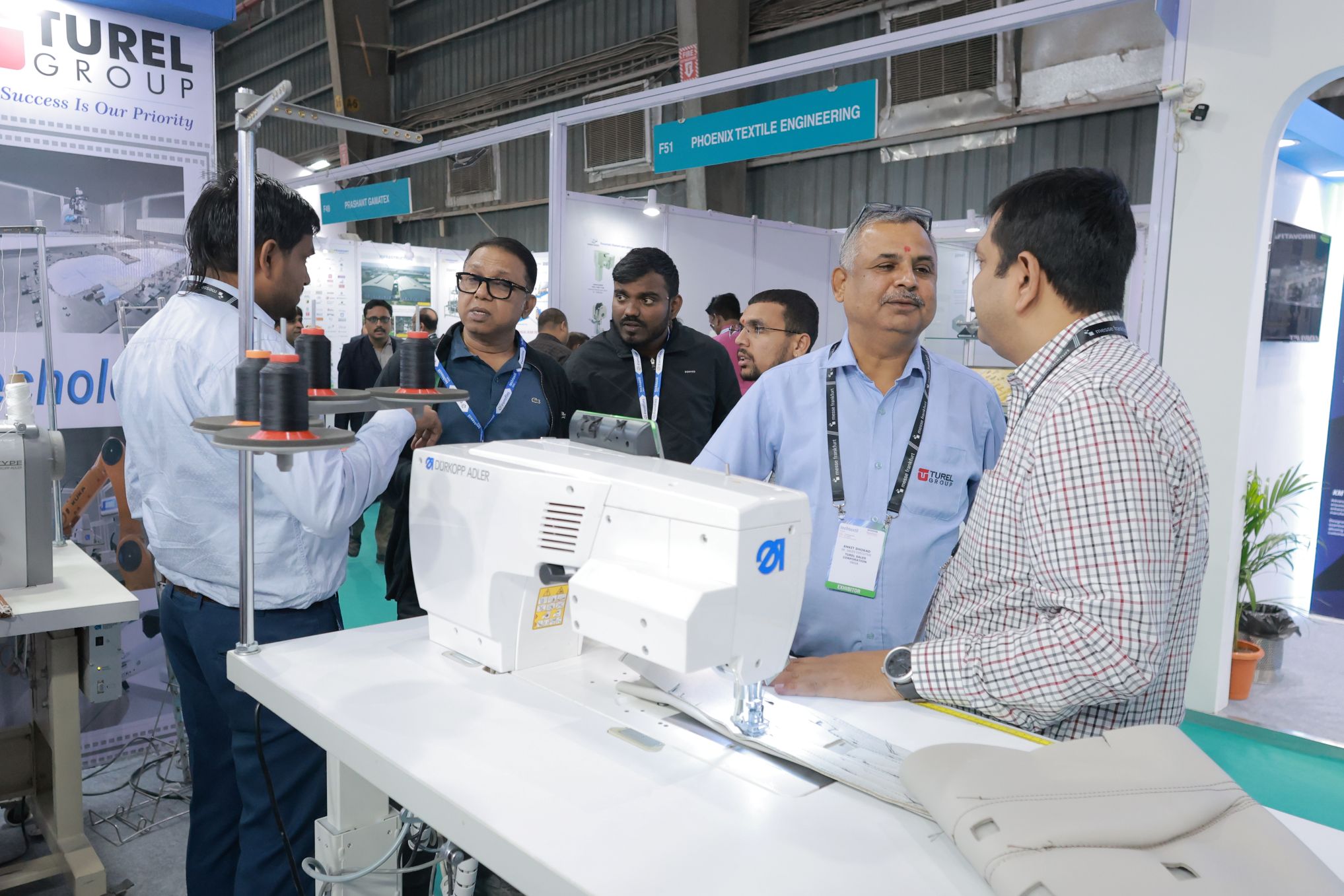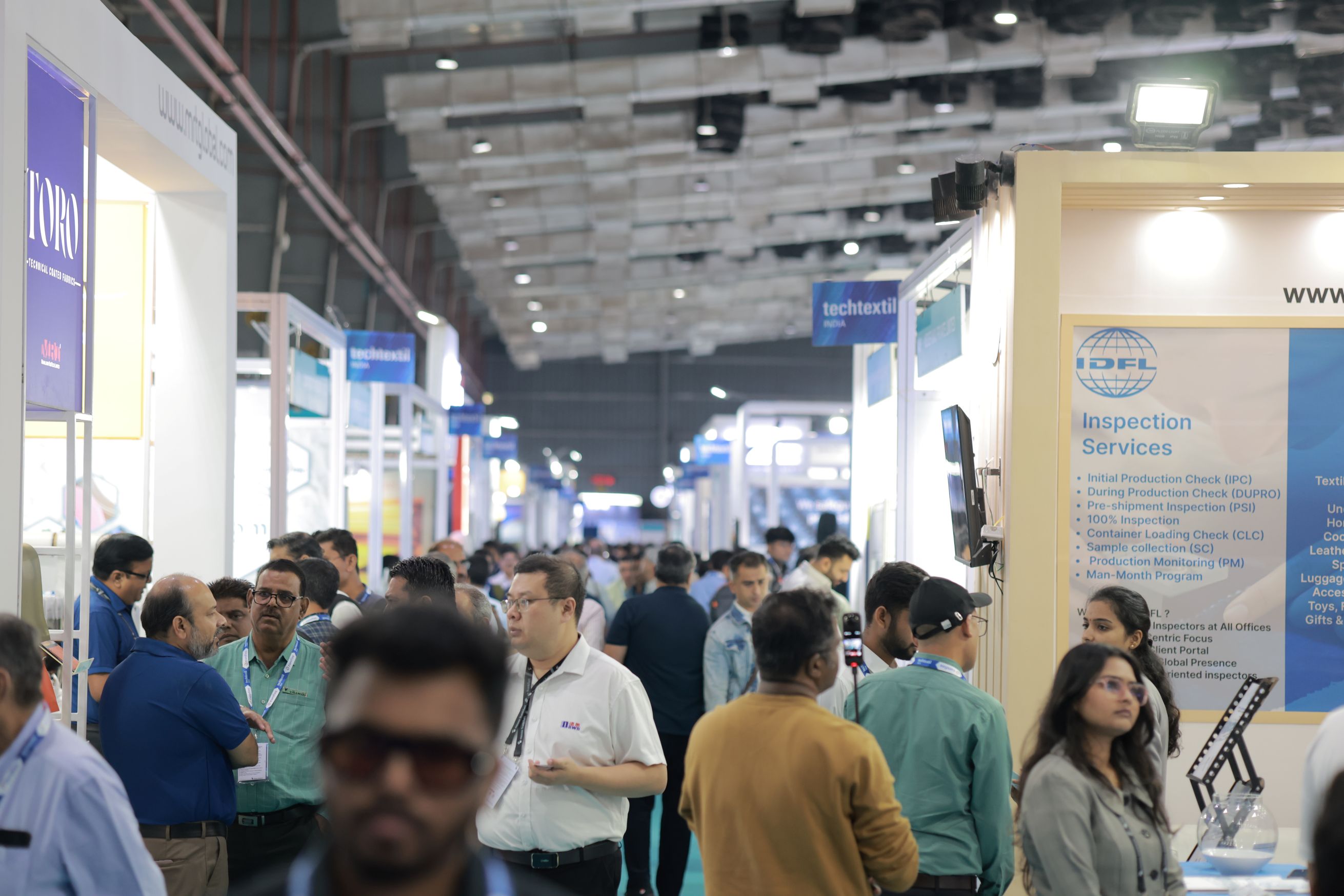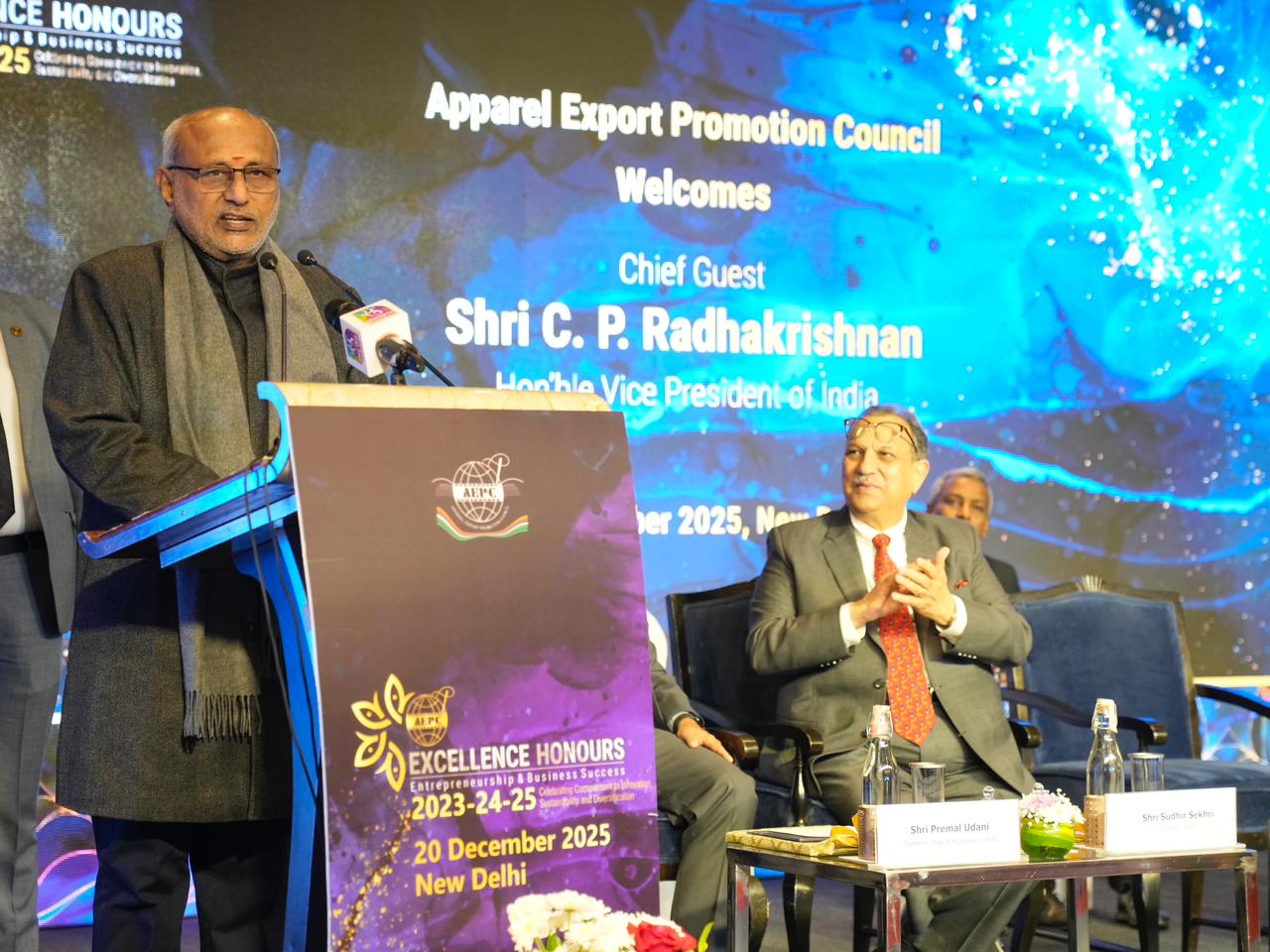FW

For over a decade, Amazon has reigned over American fashion with a formula built on convenience, scale, and aggressive pricing. Today, that era of effortless growth is giving way to a new chapter, one that requires deeper brand-building, high-touch experiences, and a more sophisticated understanding of fashion consumers. Amazon no longer needs to win market share; it needs to win the right kind of share, the profitable pockets of the market where loyalty, curation, and brand equity matter as much as price and delivery speed.
A market leader encounters its next wall
Amazon’s dominance is both massive and measurable. In 2024, the company claimed an estimated 16.2 per cent of all US apparel sales, surpassing Walmart and strengthening its position as the country’s largest clothing retailer. This is reflected clearly in the core table tracking the business.
Table: Amazon US apparel sales, 2024
|
Segment |
Amazon US sales forecast (2024) |
YoY growth rate (category) |
Strategic focus |
|
Clothing, Shoes & Jewelry (Total) |
$79.2 bn |
+12.4% |
Logistics & Volume |
|
Women's Apparel |
$39.6 bn |
+9.0% |
Quality & Private Brands |
|
Luxury Stores |
N/A |
High Priority (Investment) |
Brand Trust & Experience |
The data reveals several important dynamics. The total apparel category, at $79.2 billion, still grows at 12.4 per cent, but this expansion is beginning to trail the broader platform’s growth rate of nearly 20 per cent. In practical terms, Amazon’s apparel business is beginning to mature. The women’s apparel subcategory, generating about $39.6 billion, grows even more slowly at 9 per cent, showing how the basics-driven engine viz. T-shirts, leggings, underwear, loungewear has reached saturation. Meanwhile, the luxury stores segment does not have disclosed revenue but is flagged internally as a high-priority area, indicating Amazon’s shift toward higher-margin zones rather than pure volume.
This is the clearest sign that Amazon’s future in fashion cannot rely on the same levers that led to its rise. It must transition from selling ‘everything for everyone’ to shaping a more curated, brand-forward identity.
The luxury gamble and the battle for brand perception
Amazon’s push into luxury indicates both aspiration and necessity. The company understands that premium shoppers spend more, return less, and create better margins. But it also recognizes that this customer expects something fundamentally different from what Amazon has traditionally offered.
The Luxury Stores at Amazon initiative aims to raise experience introducing controlled online storefronts, high-resolution product visuals, and brand-specific environments that mirror the digital flagships of top-tier designers. Yet the gap Amazon must bridge remains significant. Experts articulate this gap clearly. Ethan Vance, Global Head of Retail Innovation at the Fashion Institute, describes the shaping challenge as “contextualized convenience”, a blend of editorial guidance, emotional storytelling, curation, and style authority layered atop Amazon’s unmatched logistics. The question is not whether Amazon can deliver the goods; it is whether it can deliver the feeling.
Department store incumbents have responded with experiences Amazon cannot easily replicate. Nordstrom’s localized service model, stylist-led personalization, and strong omnichannel integration still resonate with high-intent shoppers. Macy’s continues to emphasize experiential merchandising and physical presence. Amazon’s countermeasures, AI-powered virtual try-ons, fit-recommendation engines, and machine-learning curation are advancing quickly, but they remain digital proxies for in-person engagement.
The luxury focus is thus both a branding challenge and a strategic wager: Amazon must prove it can be a fashion destination rather than simply a fulfillment powerhouse.
Sustainability knot tightening around supply chain
The apparel category is inherently complex, but Amazon’s scale increases the challenges. As the largest seller in the US, the company sits at the center of an industry responsible for 92 million tons of global textile waste annually. With around 65 million US consumers increasingly prioritizing environmentally responsible brands, Amazon finds itself under pressure to modernize every aspect of its supply chain.
The biggest pain point is returns. Apparel return rates are notoriously high compared to other retail categories, and for Amazon, processing a returned garment can cost three to four times more than shipping it out. These are costs that compound rapidly inside a $79 billion fashion engine. The company’s response includes initiatives around circularity, resale, refurbished apparel programs, and improved packaging efficiencies. More importantly, Amazon is investing heavily in AI-driven sizing tools, body data mapping, and design-stage accuracy enhancements to reduce returns before they happen. For a company handling hundreds of millions of fashion units annually, even small efficiency gains translate into major financial and environmental impact.
How the apparel platform actually works
Amazon’s fashion business is not a single monolithic operation. It is a layered marketplace composed of millions of third-party sellers blended with the company’s expanding roster of private labels. Brands like Amazon Essentials and The Drop anchor its mass-market apparel offering, offering seasonless basics and trend-driven capsule collections that consistently rank among its top-selling lines. Its core market remains the US, contributing over $56 billion in clothing, footwear, and accessories sales in recent years. Women’s apparel leads, forming the backbone of the nearly $40 billion that category contributes to 2024’s projected total.
Amazon’s long-term strategy is shaped around three pillars: hyper-personalization powered by artificial intelligence, significant investment in its Luxury Stores venture, and a sweeping redesign of its supply chain to embed sustainability into its cost structure. Each of these pillars is designed to move Amazon from being merely the biggest to being strategically indispensable in fashion’s next decade.
A new era taking shape
When Amazon began its serious push into apparel around 2012, the industry did not view it as a fashion authority. It was a marketplace with logistical advantages, known more for socks and basics than for style. But as the years progressed, the combination of fast shipping, selection depth, competitive pricing, and sheer convenience reshaped consumer behavior and pushed Amazon to become the largest apparel retailer in the US.
Now, as market saturation and consumer expectations evolve, Amazon faces a more complex challenge. The company must demonstrate not only operational excellence but aesthetic credibility, not only scale but storytelling. The brand that conquered basics must now build a new identity one that can speak to value-conscious shoppers and luxury consumers without diluting either experience. Amazon has proven it can dominate. What it must prove now is that it can curate, inspire, and lead.
Myanmar’s garment sector is on track to generate $5 billion in foreign revenue this year. The Chinese Textile and Garment Association in Myanmar (CTGA) warns, a ‘raw material vacuum’ is draining the country’s foreign reserves. Currently, a staggering 95 per cent of factories operate on a restricted Cutting-Making-Packaging (CMP) basis, requiring the costly import of every component from zippers to high-grade fabrics. To counteract this dollar outflow, the industry is aggressively courting Chinese investment to transition toward a high-value Free on Board (FOB) model.
The regional export split and workforce targets
The strategic Free on Board (FOB)95 per cent urgency is backed by a shift in global demand. Recent data confirms, 60 per cent of Myanmar’s garment exports are now absorbed by the European market, followed by 20 per cent to Japan. To sustain this momentum, the Myanmar Garment Manufacturers Association (MGMA) has unveiled a ten-year roadmap (2025–2034) aiming to grow the industry into a $15 billion powerhouse. This expansion is projected to create a massive employment surge, targeting a workforce of 1.2 to 1.6 million people - up from roughly 500,000 today.
Infrastructure barriers and the energy challenge
The transition to FOB is not merely a financial shift but a technical one. At the 2025 Myanmar International Textile and Machinery Fair held in Yangon this month, over 100 exhibitors highlighted that ‘stable energy’ remains the primary hurdle for localized raw material processing.
To mitigate this, Chinese investors are introducing solar-powered textile machinery and advanced generators. Successfully localizing just 20 per cent of input production could stabilize the volatile kyat and transform Myanmar from a simple assembly hub into a vertically integrated apparel giant by 2030.
Representing 523 member factories, MGMA is the primary regulatory and advocacy body for Myanmar's textile, footwear, and apparel sectors. The association oversees the production of knitwear, woven garments, footwear, and accessories, primarily serving high-street European and Japanese retailers.
South Korea’s retail landscape is witnessing a significant revival, underpinned by a rise in consumer sentiment. According to data released by the Ministry of Trade, Industry and Energy, total retail sales rose 4.2 per cent in November compared to the previous year. This growth was fueled by a Consumer Sentiment Index (CSI) that climbed to 112.4 - the highest reading in seven years. The uptick reflects a definitive rebound in domestic demand, as shoppers move past earlier economic uncertainties to embrace a season of premium spending.
Department stores lead the winter fashion charge
Physical retail outperformed expectations, with department stores reporting a robust 12.3 per cent Y-o-Y increase. The primary driver was a growth in high-end winter apparel and global luxury brands, which saw sales jump by 23.3 per cent. ‘Department stores have successfully recast themselves as experiential content platforms,’ noted a Ministry official, highlighting how premiumization strategies attracted big spenders who shifted away from duty-free and overseas shopping due to a weaker won. This ‘stay-at-home luxury’ trend has provided a much-needed boost to the domestic fashion ecosystem, even as hypermarkets struggled with a 9.1 per cent dip in food-related sales.
While online platforms now account for 54.1 per cent of total retail revenue, the digital fashion segment faced a surprising contraction. Online sales for foodstuffs and cosmetics soared by 15.8 per cent and 10.2 per cent respectively while sales of fashion and sports-related items declined by 7 per cent and 14.1 per cent. Industry analysts suggest, this indicates a ‘hybrid shopping’ shift, where consumers prefer the tactile experience of trying on winter coats and luxury goods in-store while utilizing e-commerce for high-frequency essential categories. This divergence presents a new challenge for digital-only apparel retailers heading into 2026.
German sportswear giant Puma SE has strengthened its balance sheet with over €600 million ($707.27 million) in fresh financing. Underwritten by Santander CIB, the package includes a €500 million bridge loan and an additional €108 million credit line, both carrying a two-year maturity. This capital infusion arrives at a definitive ‘reset year’ for the brand, as it moves to refinance its existing Puma SE’s €1.2 billion revolving credit facility and clear the deck for a 2026 turnaround aimed at establishing Puma as a top-three global sports brand.
Strategic pivot: Shedding inventory to scale innovation
The new funding is specifically earmarked to provide ‘headroom’ as Puma navigates a complex transition. In 2025, the brand took aggressive measures to ‘clean up’ its distribution, including slashing lower-quality wholesale accounts and aggressively discounting excess stock. This reset was reflected in Q3 2025 results, where apparel sales dipped by 12.8 per cent to €635.5 million.
However, Markus Neubrand, CFO, notes, the bank-backed confidence allows Puma to focus on high-margin performance categories - such as the MagMax running series - rather than defensive inventory management.
The ‘10FOR25’ sustainability milestone
While the financial markets focus on the loan, the textile sector is watching Puma’s ‘10FOR25’ sustainability targets. By the close of 2025, Puma aims for 90 per cent of its apparel and accessories to contain more than 50 per cent recycled or certified materials. The recent liquidity ensures that despite a reported EBIT loss in 2025 due to trade headwinds and US tariffs (estimated at an €80 million hit), the company can maintain its €250 million CAPEX commitment toward supply chain diversification in Vietnam and Indonesia and its ‘fiber-to-fiber ‘recycling programs.
A premier global sports brand, Puma is involved in designing, developing, and marketing footwear, apparel, and accessories.
Terming the India-New Zealand Free Trade Agreement (FTA) as an Oceania Gateway, the Southern India Mills’ Association projects, it could catalyze a $500 million annual opportunity for MSMEs in hubs like Tiruppur and Surat within the next 24 months.
Market diversification amidst global headwinds
The agreement arrives as the industry aggressively pivots toward its $350 billion by 2030 valuation target. While traditional Western markets face demand volatility, Indian textile exports to 111 countries rose by 10 per cent in H1, FY2025–26, reaching $8.49 billion. The New Zealand FTA acts as a strategic buffer against global shifts, specifically targeting high-value segments like sustainable denim and organic cotton knits - categories where New Zealand’s affluent consumer base shows strong preference.
Productivity and the power of 5,000 visas
Beyond merchandise, the ‘New Generation’ trade pact integrates a $20 billion investment commitment from New Zealand over 15 years and a dedicated Temporary Employment Entry Visa pathway. This allows 5,000 Indian professionals annually to enter New Zealand, facilitating a two-way flow of design expertise and technical skills. Combined with the government's Mission for Cotton Productivity, this mobility ensures that India’s MSME-dominated sector (80 per cent of total capacity) is now better equipped to handle the rigorous quality and contamination standards of developed Pacific economies.
SIMA is the single largest representative body of the organized textile industry in South India, influencing policy for the entire value chain from fiber to fashion. Historically centered on cotton spinning, SIMA-associated mills have diversified into man-made fibers (MMF), technical textiles, and high-end apparel for the US, EU, and now Oceania markets.
Global retailer Shein just released its inaugural US Trends Report, revealing, while tops and versatile basics dominated nationwide, American style has fractured into distinct regional identities. From the ‘Nostalgic Y2K’ minimalist silhouettes of the Northeast to the West Coast’s ‘Camouflage-edge’ modernism, the report highlights a shift toward lifestyle-driven functionality. Shoppers in 2025 are increasingly prioritizing value, with beauty tools and smart home solutions frequently outselling pure fashion items across the Midwest and South.
The on-demand engine drives unprecedented margins
Beyond style, the story of 2025 is Shein’s financial resilience. Despite the end of the ‘de minimis’ tax exemption and new US tariffs, the company is forecasting a $2 billion net income for the year - early doubling its 2024 profits. This growth is anchored by its ‘on-demand’ production methodology, which tests new designs in batches as small as 100 units. By passing tariff costs through strategic price hikes and slashing advertising spend, Shein has maintained mid-teen sales growth, even as it pivots toward a potential Hong Kong IPO valued between $30 billion and $50 billion.
Strategic pivot: Supply-chain-as-a-service
The most significant development for the textile sector is the launch of the Shein Xcelerator program. The retailer has begun opening its legendary 5-to-7-day manufacturing network in China to external fashion brands. As the global fast-fashion market heads towards a $180 billion valuation in 2026, Shein’s move to monetize its logistics as a service marks a transition from a simple retailer to a foundational infrastructure provider for the digital fashion economy.
A global e-commerce giant, Shein utilizes a Consumer-to-Manufacturer (C2M) model to produce high-trend apparel and lifestyle products at scale. The United States remains its largest revenue driver, followed by Brazil and Mexico, though it operates in over 150 countries.

The Indian textile and apparel industry is currently weathering a period of complex recalibration. According to the latest Wazir Textile & Apparel Index (H1 FY26), the sector's performance in the first half of the 2025-26 fiscal year presents a starkly divided picture: while apparel sales are surging, profitability across the board is under pressure, and the core textile segment is facing a noticeable cooling period.
A Tale of Two Segments: Apparel gains while textiles slow
The report highlights a significant divergence between the Wazir Textile Index (WTI) and the Wazir Apparel Index (WAI). The core textile segment has seen a contraction in performance as the WTI sales index dropped by 4% in H1 FY26 compared to H1 FY25. This slowdown was accompanied by a decline in profitability, with the WTI EBITDA index falling by 2% during the same period. Among the top players, Welspun Living and Indo Count saw sharp standalone sales declines of 18%, while Indorama Synthetic bucked the trend with a significant 33% growth spurt.
In contrast, the apparel sector is witnessing robust top-line growth, with the WAI sales index jumping by 9% year-on-year. However, a significant profitability gap has emerged; despite higher sales, the WAI EBITDA index plummeted by 17%. This suggests that while consumers are buying more, manufacturers are grappling with significantly higher operational costs or pricing pressures. Star performers in this segment included SP Apparels, which led the pack with a 27% increase in sales, followed by Pearl Global Industries at 13%.
Consolidated Performance: Revenue up, margins thin
When looking at the broader market—comprising 310 listed companies—the industry appears to be expanding in volume but staying flat in value. Consolidated sales for all listed textile and apparel companies reached Rs. 93,492 crore in H1 FY26, representing an 11% increase over the Rs. 84,370 crore recorded in H1 FY25. While this 11% increase in total sales is a positive signal for demand, the stagnation of consolidated EBITDA margins at 8% indicates that the industry has not yet managed to translate higher revenues into better bottom-line efficiency. Global headwinds and export realities
The export landscape remains a primary concern for the industry, as overall Textile & Apparel (T&A) exports grew by a marginal 1% in H1 FY26. Category shifts reveal a nuanced story: while apparel exports rose by 4%, the filament category saw a massive 28% collapse in export value. The USA remains the largest buyer, though its share of Indian T&A exports dipped slightly to 28% from 29% the previous year. Interestingly, India’s T&A imports rose by 15%, driven by a 25% increase in fabric imports, signaling a potential reliance on external raw materials to meet domestic or export demand.
The Road Ahead: PLI and modernization
As companies review medium to long-term growth plans, particularly in Man-Made Fibre (MMF) based textiles and apparel, the Production Linked Incentive (PLI) scheme continues to be a relevant consideration for the industry. For organizations evaluating the applicability of the PLI scheme, strategic support through eligibility assessment and implementation planning will be vital to turning stagnant margins into sustainable growth.
The conclusion of the 10th edition of Techtextil India in Mumbai marks a definitive transition for the country’s textile landscape, moving away from traditional garment manufacturing toward high-value, engineered solutions.
Attracting over 9,000 visitors from 45 countries, the event underscored a strategic alignment between Indian industrial capacity and the global demand for ‘Sporttech,’ medical textiles, and protective gear. As the Indian government identifies man-made fibers (MMF) as a ‘sunrise sector,’ the event served as a barometer for the industry's readiness to compete in the high-margin global technical textile market, which is increasingly governed by stringent sustainability and performance standards.
Strategic alliances and the influx of specialized technology
A primary driver of growth identified during the three-day exhibition was the formation of cross-border partnerships designed to bridge the technological gap in specialized protective wear. A notable development included the partnership between Brawntex Industries and Japan’s Kurabo Industries, aimed at introducing advanced fire-retardant fabrics to the Indian military and industrial workwear segments. This shift toward domestic production of high-specification textiles for sectors like oil and gas, iron, and steel reflects a broader strategy to reduce import dependency while positioning India as a secondary global manufacturing base for specialized safety apparel.
Sustainability as a competitive framework for global exports
The narrative of the 2025 edition was heavily dictated by the integration of circular economy principles into the supply chain. Rather than viewing environmental responsibility as a regulatory burden, exhibitors like Pulcra Chemicals and Birla Cellulose framed sustainability as a core market differentiator. The exhibition floor showcased a significant move toward resource-efficient manufacturing, including AI-based waste sorting, PET-to-yarn recycling, and the development of bio-based materials. These innovations are critical for Indian exporters aiming to penetrate European and North American markets, where traceability and the lifecycle impact of textiles are becoming mandatory procurement criteria.
Diversification into Agrotech and infrastructure solutions
Beyond apparel, the industry is aggressively diversifying into functional applications that support India’s domestic infrastructure and agricultural goals. Collaborative sessions led by the Indian Technical Textile Association (ITTA) highlighted advancements in ‘Agrotech’ and ‘Geotech,’ specifically focusing on crop protection covers and coastal reinforcement materials. These engineered textiles are being developed to meet the specific climatic challenges of the Indian subcontinent, utilizing natural fibers enhanced with smart materials to improve durability. The focus on infrastructure-related textiles, such as those used in vehicle airbags and construction filtration, indicates that the sector's growth is being fueled by the expansion of the domestic automotive and civil engineering industries.

The rise of performance activewear and scalable manufacturing
The emergence of a dedicated ‘Sporttech’ pavilion highlighted a significant pivot toward the premium activewear market. As global brands look to diversify their sourcing away from traditional hubs, Indian manufacturers are investing in advanced knitting technologies and functional finishing processes to meet the requirements of high-performance sportswear. By focusing on the intersection of chemistry- through specialized additives and coating technologies - and mechanical innovation, the Indian technical textile ecosystem is moving toward a vertically integrated model. This integration, spanning from raw fibre production to post-consumer recycling, suggests a long-term strategy to transform India from a commodity fabric producer into a sophisticated hub for engineered textile solutions.
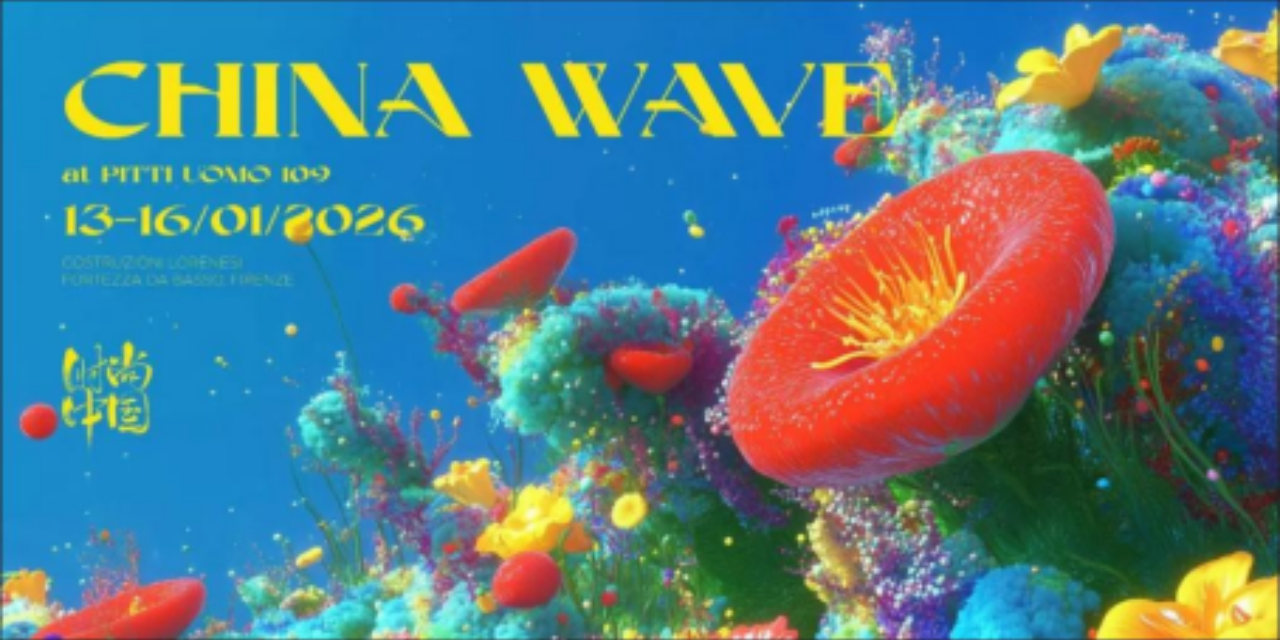
The landscape of international menswear is witnessing a structural shift as the ‘China Wave’ initiative returns to the 109th edition of Pitti Uomo in Florence.
Scheduled for January 13–16, 2026, this strategic showcase at the Costruzioni Lorenesi represents far more than a simple trade exhibition; it signals a definitive move by the China Apparel Association to transition from ‘product export’ to ‘brand export.’ As traditional manufacturing volumes face headwinds from shifting global tariffs and a cooling domestic economy, China’s leading independent labels are doubling down on creative authorship and cultural identity to secure a premium foothold in the European luxury market.
A strategically anchored cultural dialogue
Under the season’s central theme of ‘Movement,’ eight selected brands are presenting a mature vision of contemporary Chinese aesthetics across a 150-sq-m pavilion. This edition highlights how the initiative has evolved from a tentative exploratory project into a strategically anchored platform. Leading the charge is Septwolves, a dominant force in Chinese menswear known for its high-tech business-travel jackets. Fresh from a showcase at Milan Centrale, the brand is leveraging Pitti Uomo’s global stage to demonstrate how technical innovation- such as modular designs and intelligent heating systems- can be seamlessly integrated into high-end urban tailoring.
The fusion of heritage and high-performance leisure
The 2026 delegation reflects a diverse cross-section of the ‘New China’ design philosophy, moving away from mass-market replicas toward heritage-driven storytelling. For instance, Wu Rang treats Chinese history and geography as its design DNA, translating ancient literary impulses into wearable contemporary fashion. Conversely, labels like A. New Studio and JoeWithLol are capturing the ‘Urban Leisure’ trend, blending minimalist silhouettes with bold, experimental outdoor aesthetics. This shift is critical as global buyers increasingly seek ‘Quiet Luxury’ with authentic cultural roots, allowing these brands to distinguish themselves from the industrial acceleration of the past.
Millinery craftsmanship and sculptural accessories
The initiative extends beyond apparel to include refined craftsmanship in the accessories segment, showcasing a ‘humanistic; approach to design. Founded in New Zealand but rooted in Chinese life philosophy, Swöfcare is bridging nature and millinery through artisanal precision. Meanwhile, jewelry labels Zivgrey and Amano are challenging the reproducibility of industrial production with hand-forged, sculptural pieces that emphasize irregular, organic structures. By positioning these brands as ‘cultural creators’ rather than mere suppliers, China Wave is effectively rewriting the narrative of the Chinese fashion industry for a post-industrial global economy.
A high-level strategic partnership between the China Apparel Association (organizers of the CHIC fair in Shanghai) and Pitti Immagine Uomo, the China Wave initiative aims to promote high-quality Chinese independent designers and established brands on the global stage, focusing on brand identity and design culture.
Now in its fourth edition, the platform serves as a primary gateway for Chinese menswear labels to access international distribution channels and high-end retail networks.
In a decisive move to strengthen its lead in the Australia and New Zealand (ANZ) e-commerce landscape, The Iconic has secured AUD 45 million in new credit facilities from National Australia Bank (NAB). This financial package, effective through January 2028, arrives as Global Fashion Group’s (GFG) ANZ arm reports a standout year, defying broader retail sluggishness with a 7 per cent Y-o-Y growth in Net Merchandise Value (NMV). For The Iconic, this liquidity is more than a safety net; it is a strategic war chest designed to fund aggressive expansion into AI-driven personalization and ultra-fast delivery logistics.
Strategic liquidity for a post-inflationary fashion market
Consisting of a AUD 30 million revolving credit facility and AUD 15 million in bank guarantees, the arrangement is specifically structured to navigate the high-stakes seasonal cycles of the fashion industry. By securing local liquidity through NAB, The Iconic is insulating itself from global volatility while maintaining the agility to ‘seize market opportunities’ in a sector where consumer selective spending is at an all-time high. This move is particularly significant as ANZ remains GFG’s largest market, accounting for approximately half of the Group’s total NMV. The facility ensures that the platform can manage major supplier contracts and commercial leases without disrupting its core operational momentum.
The financing is underpinned by robust financial fundamentals, including a gross margin of 49 per cent and an adjusted EBITDA margin exceeding 6per cent for the twelve months ending September 2025. Unlike many competitors struggling with high return rates and inventory bloat, The Iconic has leveraged its ‘Got You Looking’ masterbrand reset and deeper marketplace integration to stabilize its bottom line. The retailer’s ability to maintain nearly half its revenue as gross profit highlights a successful shift from pure volume-chasing to a ‘quality-first’ retail model. This profitability trend is further supported by the recent launch of ‘The Iconic Front Row’ loyalty program, which aims to boost customer lifetime value through tiered rewards and exclusive perks.
Looking toward 2026, The Iconic is pivoting toward a ‘tech-heavy’ infrastructure. The company has already reported a 50 per cent improvement in delivery times to Melbourne and continues to invest in AI-powered inventory forecasting to minimize markdowns. By integrating warehouse management systems across its Southeast Asian and ANZ operations, the brand is creating a leaner, more responsive supply chain. This technological edge is critical as the Australian fashion market, currently valued at $13.4 billion, moves toward a more digital-centric future where speed and personalized curation are the primary drivers of brand loyalty.
Founded in 2011, The Iconic is the leading online fashion and lifestyle destination in Australia and New Zealand. It is part of the Global Fashion Group (GFG), which operates similar market-leading platforms in Latin America (Dafiti) and Southeast Asia (Zalora).

